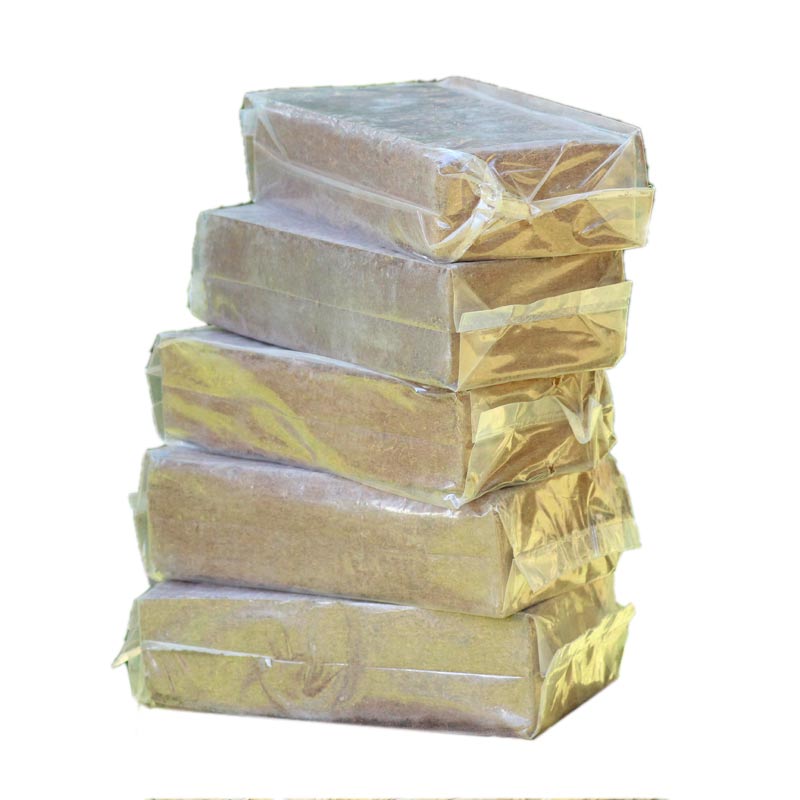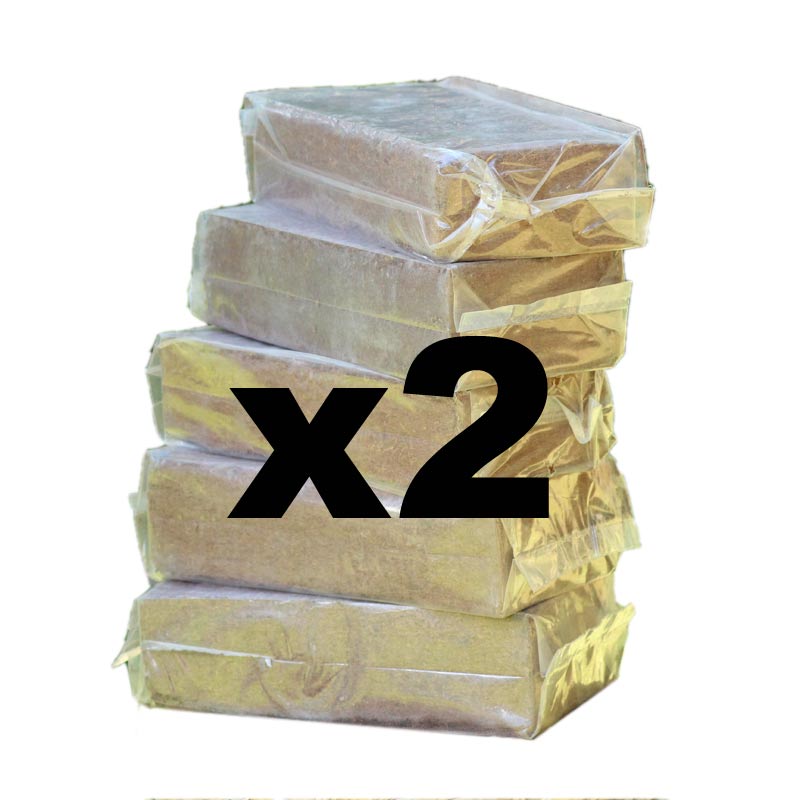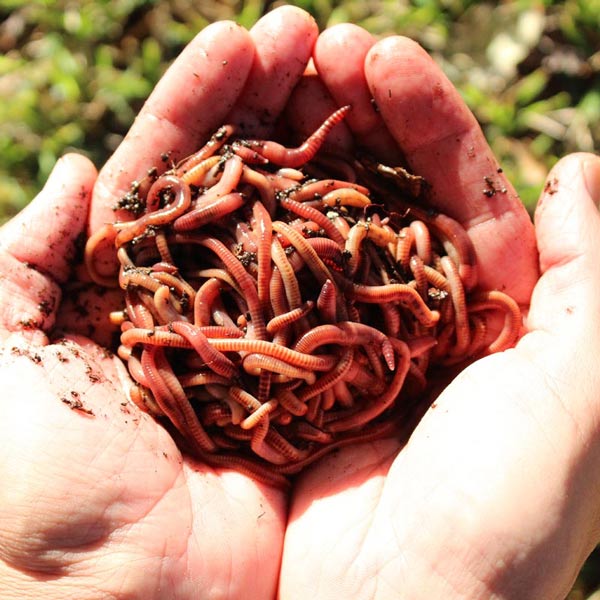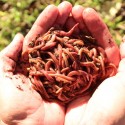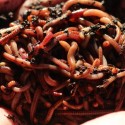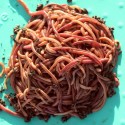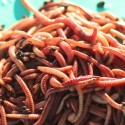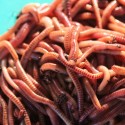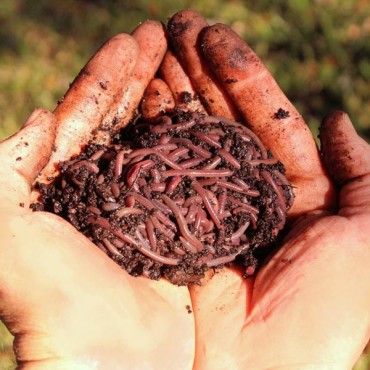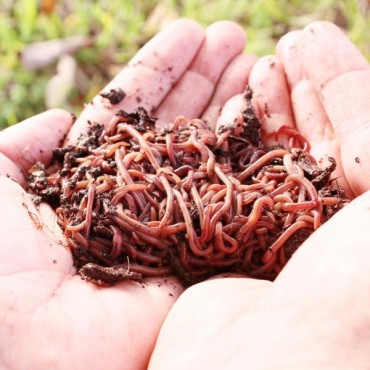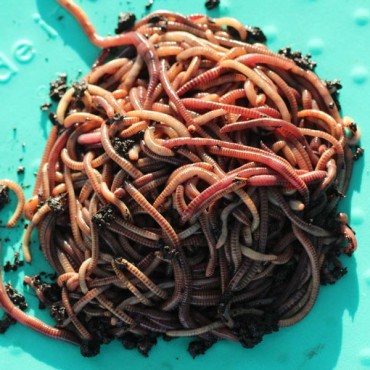Overview
The European Nightcrawler is a popular worm for home composters, professional worm casting producers, as well as having a foothold in the bait business. Raised extensively in Holland, it has been exported around the world and has become a favorite within the worm wrangling community because of its tolerance to a wide range of temperatures. It can be identified by its very distinctive striped banding and wide girth. Although smaller in total mass than the African Nightcrawler, the quality of its castings are not affected by this slight difference in size. You can feed them either kitchen scraps or grain meal. The European Nightcrawler is a superb choice to use for fishing bait. They grow relatively quickly, are less sensitive to cold weather, and stay firm on the hook. Do you have memories of using a Canadian Nightcrawler that went limp and soggy on your hook after a only few minutes? The Europeans will stay alive while submerged for much longer than other earthworms. And it has plenty of width to fit on larger hooks when fishing for bass or catfish.Habitat Recommendations
For 250 European Nightcrawlers, you can utilize any of the following containers:- 5 gallon storage tote, minimum
- Minimum container dimensions: 16.0" L x 12" W x 9" H
- Worm Factory, 2 tray minimum
- 5 gallon bucket
- *Manure pile
- *Compost pile
Bedding Recommendations
European Nightcrawlers can live in several different types of bedding. You can mix and match at your convenience:- *Composted manure
- Coconut coir
- Shredded newspaper
- Mushroom compost
- Shredded brown cardboard
- Peat Moss
*Horse and cow manure MUST be thoroughly composted before
using, at least 4-6 weeks. If using rabbit manure be sure to hose down
thoroughly if you are sourcing from directly under rabbit hutches due to
possible high urine saturation.
Feeding Tips
Your European Nightcrawlers can eat just about everything you can! However, you should stay away from meat and fried food. Meat can smell horribly when it decomposes and fried food doesn't break down properly and your worms won't be able to eat it.What amount of kitchen scraps should you feed 250 European Nightcrawlers?
There isn't really a need to get scientific and measure everything out
-- use the size of your hand making a fist as your measuring tool. For 250 European Nightcrawlers, begin feed with 3 fist-sized
portions of kitchen scraps. Depending on the state of decomposition, it
will take anywhere between 1-3 weeks for those scraps to be consumed.
When the food has almost disappeared, repeat with 3 fist-sized
portions. As time goes by, you will begin to recognize how long it
takes different types of food to be consumed and if any adjustments need
to be made.
How much specially formulated grain feed should you feed 250 European Nightcrawlers?
There are two feeding methods for grain feeding; 1) top feeding and 2) total mix feeding.
For top feeding,
begin with 1/4 cup of grain even sprinkle on the top of the bedding,
then mist with water to soften the feed. Do not feed again until ALL of
the grain has been consumed. This will take anywhere between 12 to 36
hours. If the feed is consumed in less than 12 hours you can increase
the amount. If it takes longer than 36 hours, decrease the amount. Add
2 inches of bedding every 2 weeks to keep your bedding fresh.
For total mix feeding, add 1/4 cup of feed per 1 gallon of
bedding and thoroughly mix. Make extra bedding/feed mix to continue
feeding when the worms have consumed the grain. The mixed-in feed
should satisfy the worms for about 3 weeks. After 3 weeks, add 1 inch
of the extra bedding/feed mix to the top of your habitat bedding.
Good to Know's
- Try to harvest the castings at least every 4-5 weeks. The higher the
ratio of castings to bedding there is, the more difficult it will be to
harvest the worms. This is because castings, when moist, have a similar
texture to mud which will make separating the worms an arduous process.
- Don't forget to ensure your habitat has some type of drainage capability. Food scraps contain water which will pool in the bottom of the habitat if there isn't drainage.
- If you have raised Red Wigglers you should not have any problems with the European NCs -- just remember that since the European is a larger worm it will produce castings faster, therefore bedding changes will be more frequent.



